Local Native Trees, Shrubs & Vines
| Plant Details | |
| Common Name Mapleleaf Viburnum Botanical Name Viburnum acerifolium This shrub grows 4-8 feet high and 4 feet wide. Foliage is bright to dark green in the summer and reddish-purple in fall. Flowers start out pink prior to opening, then flower turns a creamy white in June. Fruit are long, black ovals hanging at the tips of branches from September into winter. Very shade tolerant! A terrific food source for many woodland species. Mapleleaf Viburnum Details |
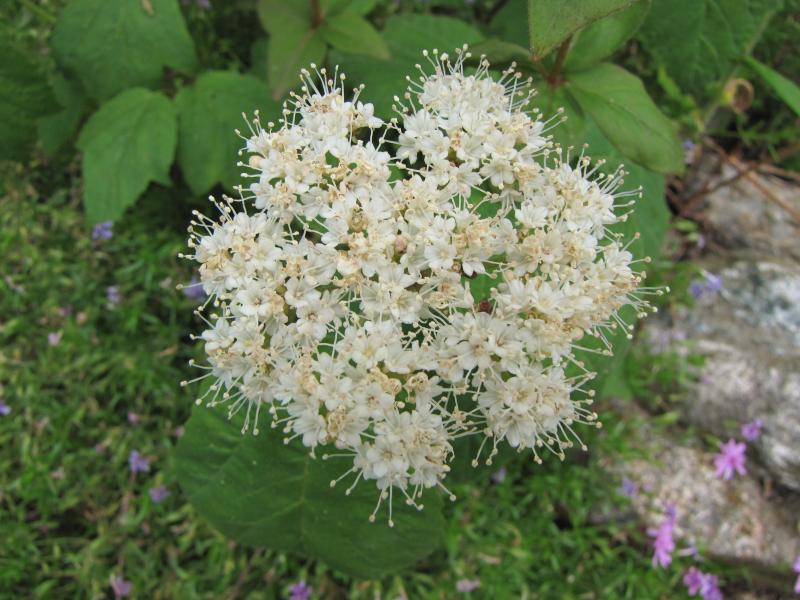 |
| Common Name Hobblebush Botanical Name Viburnum alnifolium (lantanoides) Spread by suckering, this shrub grows 9-12 feet high with very open branching. Its dark green leaves are 4-8 inches long and fall color can range rose-gold to pink-purple. Flowers are 3-5 inches in diameter and bloom in mid May. Red, purple drupes come in September. Excellent for shady, moist areas. Prefers cooler northern climates. Beautiful growing along stream edges. Hobblebush Details |
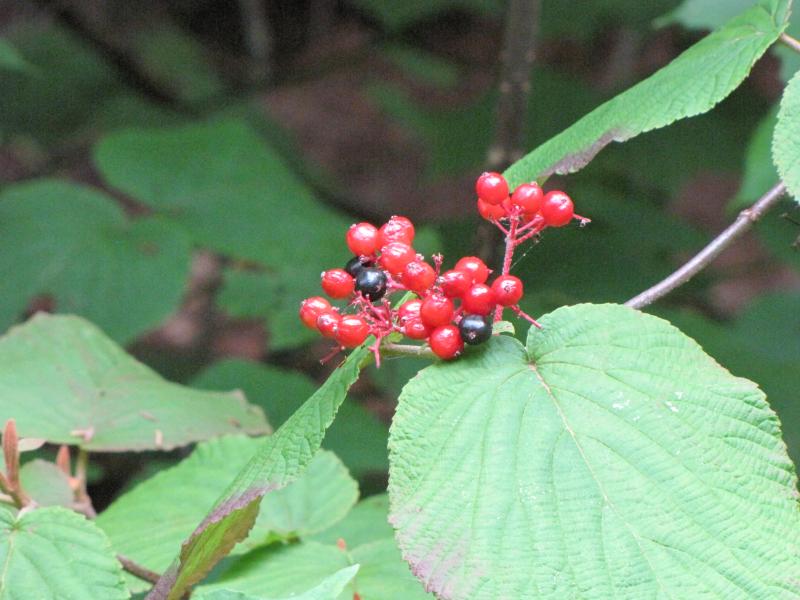 |
| Common Name Arrowwood Viburnum Botanical Name Viburnum dentatum This dense, multi-stemmed plant will colonize and grows 6-15 feet tall. It has dark green leaves in summer and glossy red to purple foliage in fall. Produces bluish, black fruits in late September that the birds love. Can tolerate many well-drained and wet soil types. Prefers sun to partial shade. Makes nice hedge or mass planting. Arrowwood Viburnum Details |
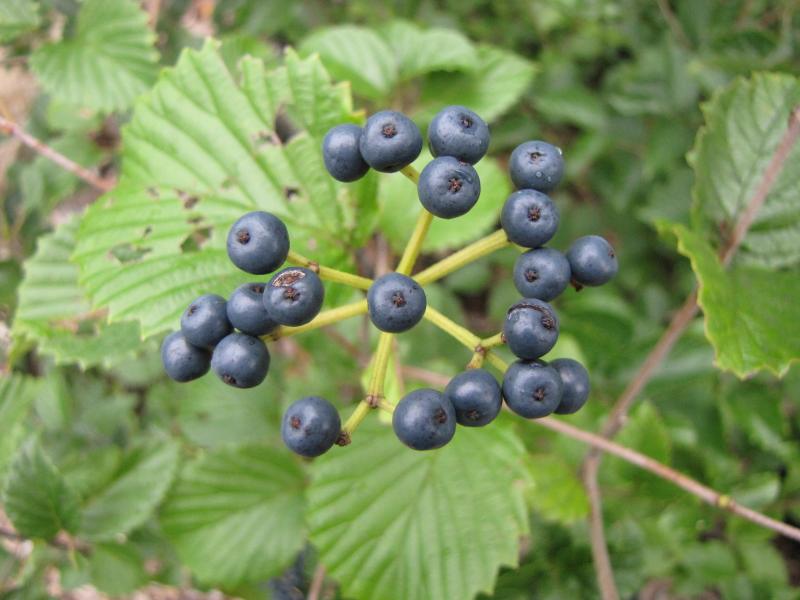 |
| Common Name Nannyberry Botanical Name Viburnum lentago This shrub grows 15-25 feet high and wide. Leaves are a glossy, dark green. Bluish-black fruit develops in drupe at end of branches in September. The fruit lasts through December and is a great winter food for birds. Very tolerant of many soil types. Prefers sun to partial shade. Nannyberry Details |
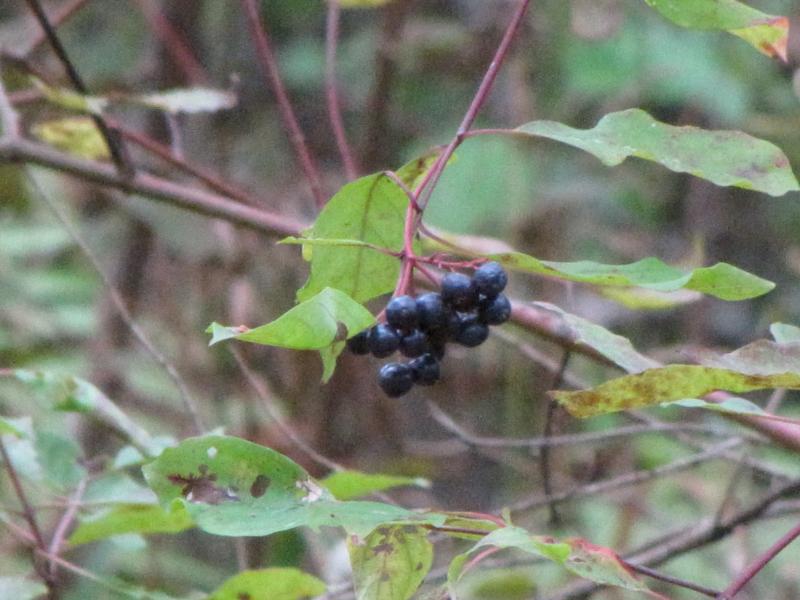 |
| Common Name Witherod Botanical Name Viburnum nudum var. cassinoides This viburnum is more tolerant of wet soil conditions than others. Grows 6-12 feet tall. Produces white flowers in the early summer. Berries change from red to black as they mature. Attracts wildlife with its edible fruit. Witherod Details |
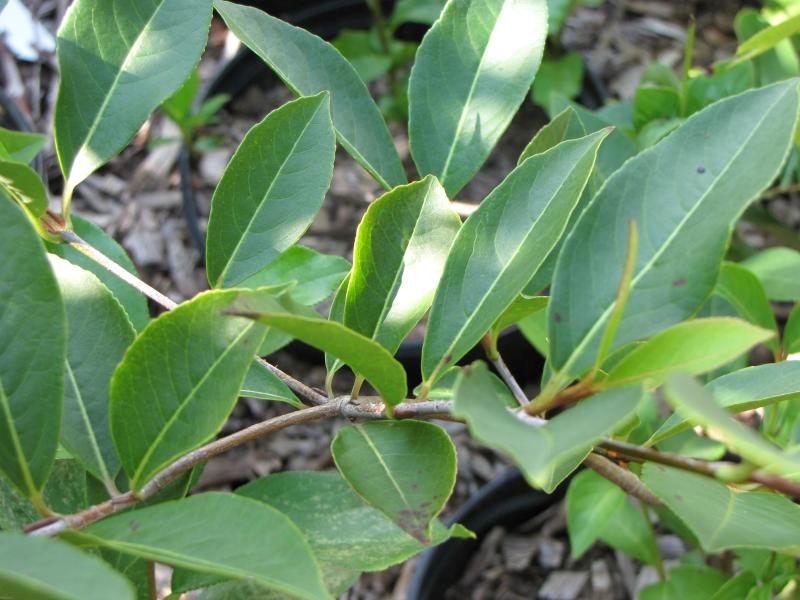 |
| Common Name American Cranberry Bush Botanical Name Viburnum opulus (trilobum) This shrub grows 8-12 feet high and wide. It has three-lobed, dark green leaves that turn yellow, red, and purple in the fall. Flowers are creamy white, flat-topped cymes 3-5 inches in diameter at ends of branches in May. The fruit is red and develops in the fall and may persist through the winter. Good for jams and jellies. Likes well drained, moist soils in the sun or partial shade. American Cranberry Bush Details |
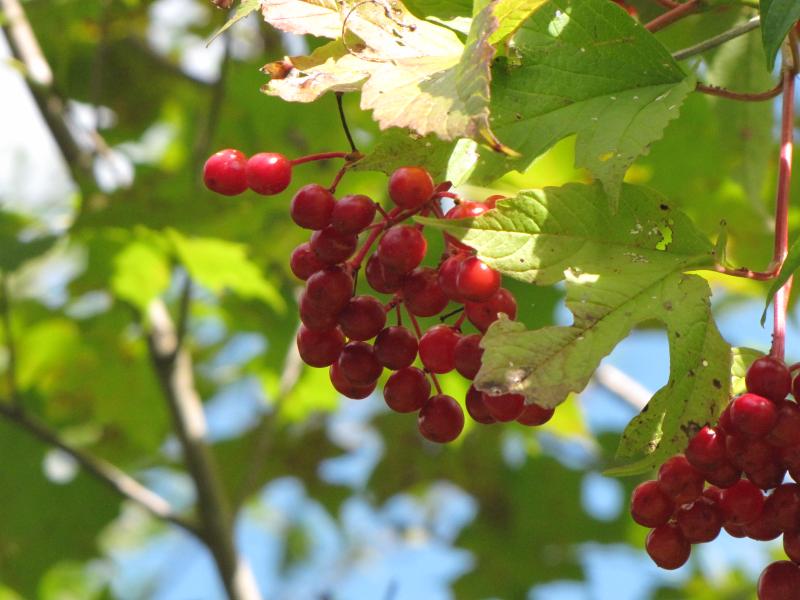 |
| Common Name Blackhaw Viburnum Botanical Name Viburnum prunifolium This shrub grows 12-15 feet high and 8-12 feet wide. It is a multi-stemmed shrub or can resemble a round headed tree. Dark green leaves turn reddish-purple in the fall. Flowers are creamy white flat-topped cymes at ends of branches in May. The fruit is bluish black and develops September through November. It can be turned into jams and jellies. Uses can be massing and borders. The single-stemmed variety can be specimen. Blackhaw Viburnum Details |
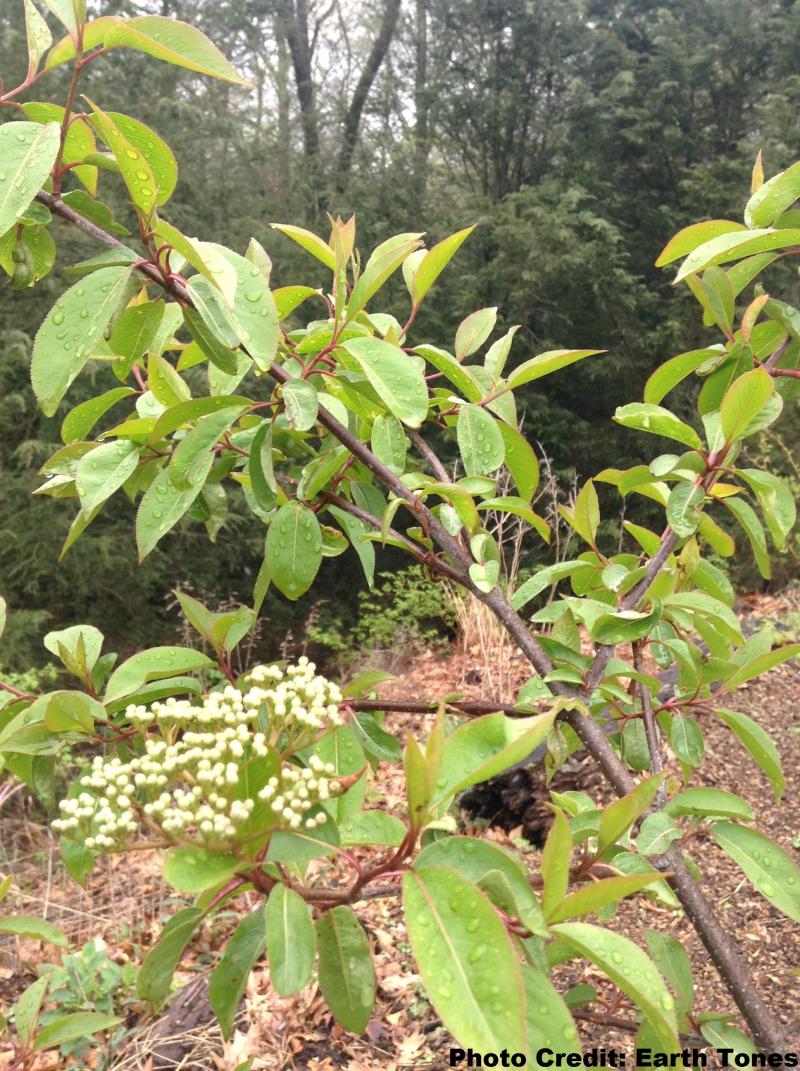 |
| Common Name Summer Grape Botanical Name Vitis aestivalis This vine grows upt o 70 feet long. Deveopls green flowers in the late spring followed by purple grapes in the late summer. The grapes taste best after the first frost! dried grapes are great for snacking and baking! Prefers full to partial sun with dry, sandy, well-drained soil. Summer Grape Details |
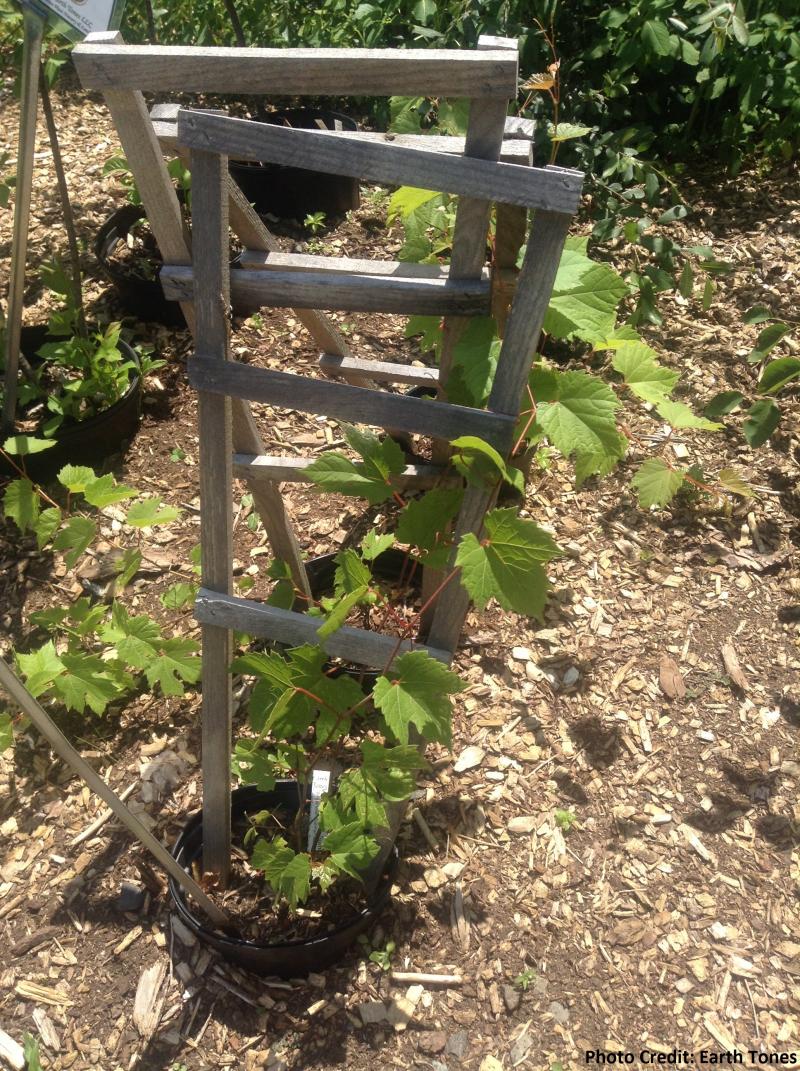 |
| Common Name Fox Grape Botanical Name Vitis labrusca This grape likes moist but well-drained soils and can be found in open woods, roadsides and thickets. Fruits from September through October. Fruit and leaves are edible! Fox Grape Details |
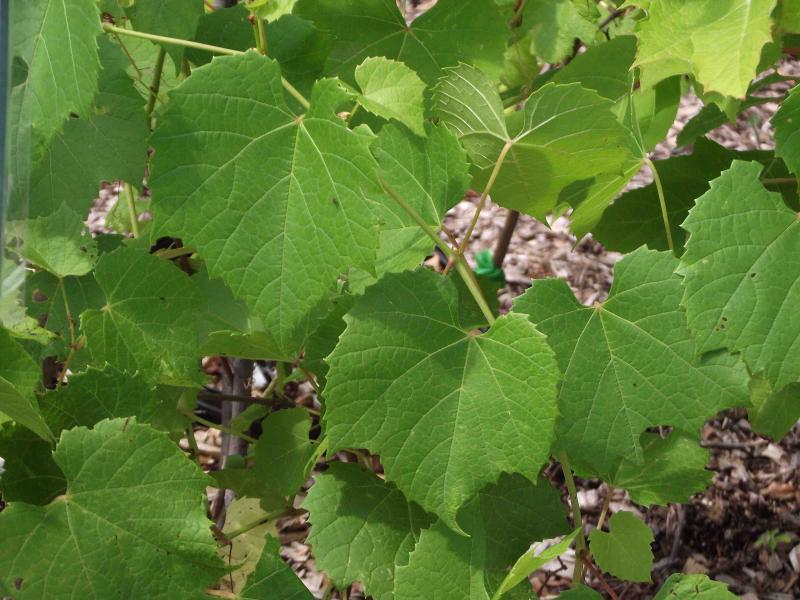 |
| Common Name River-Bank Grape Botanical Name Vitis riparia This vine is found along rivers, thickets and roadsides. Fruit is there August-September. Fruit and leaves are edible! River-Bank Grape Details |
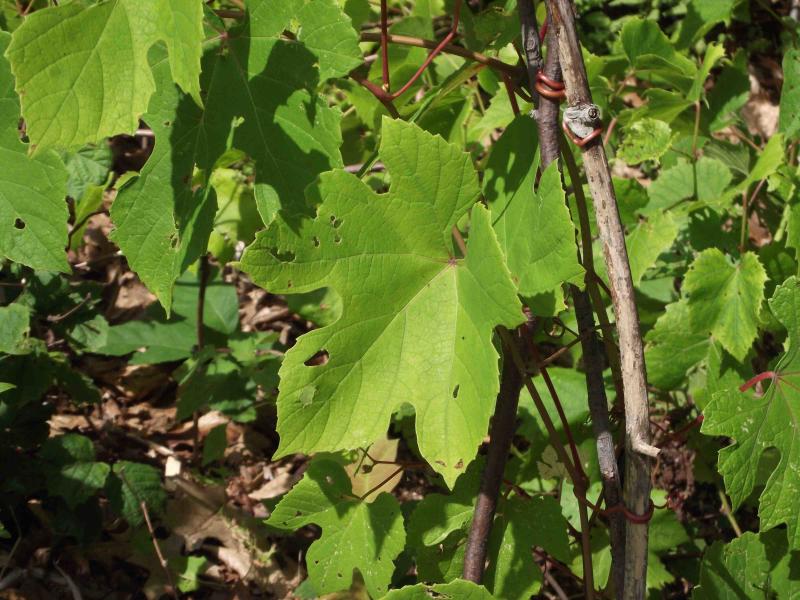 |
